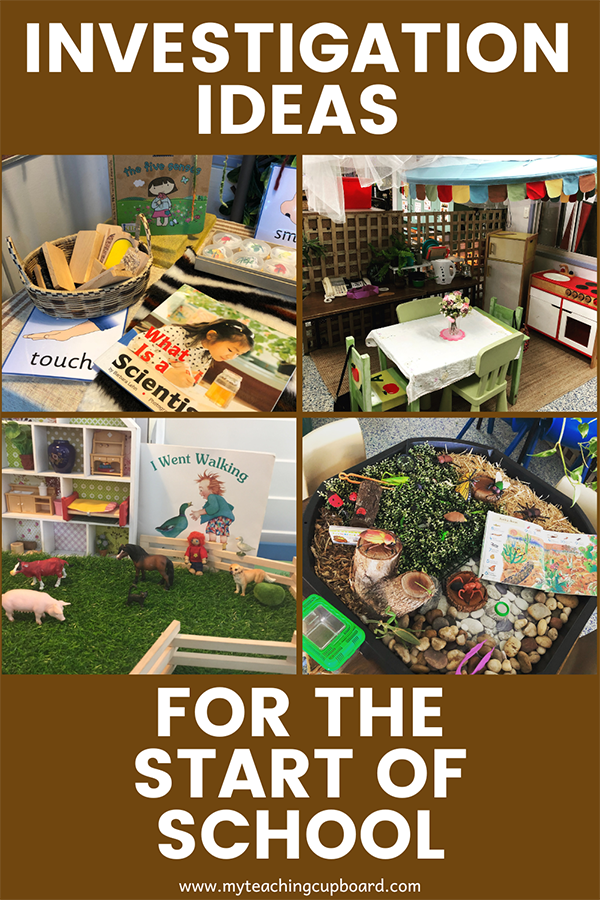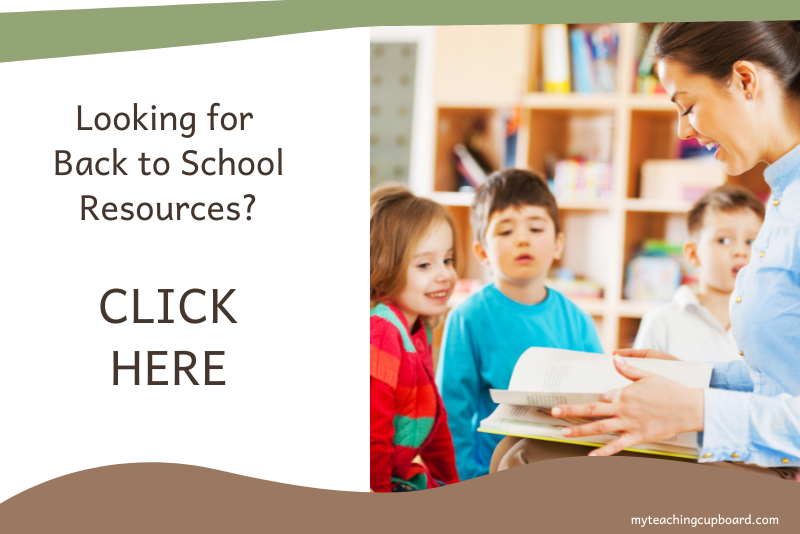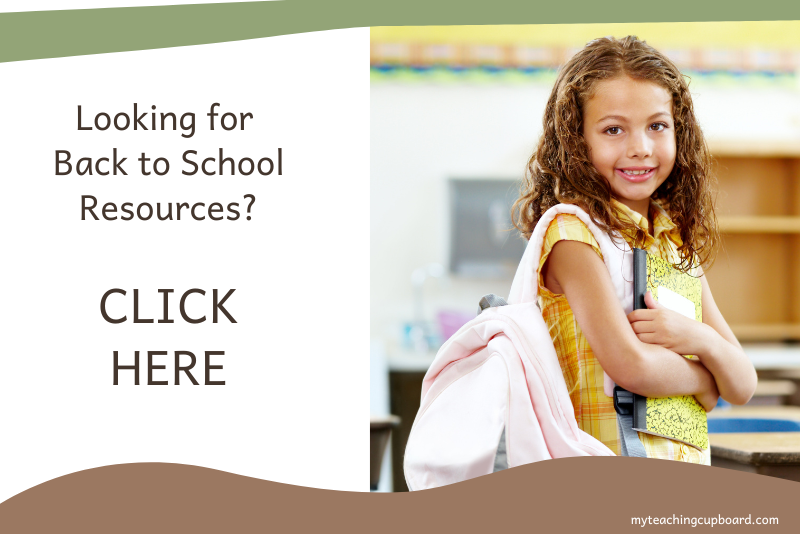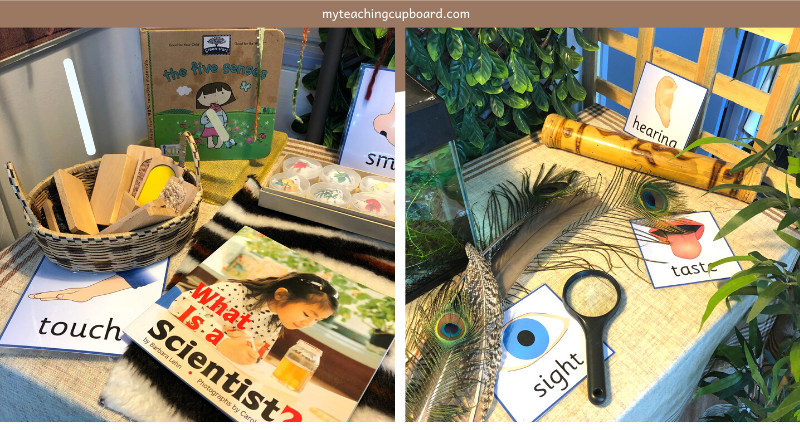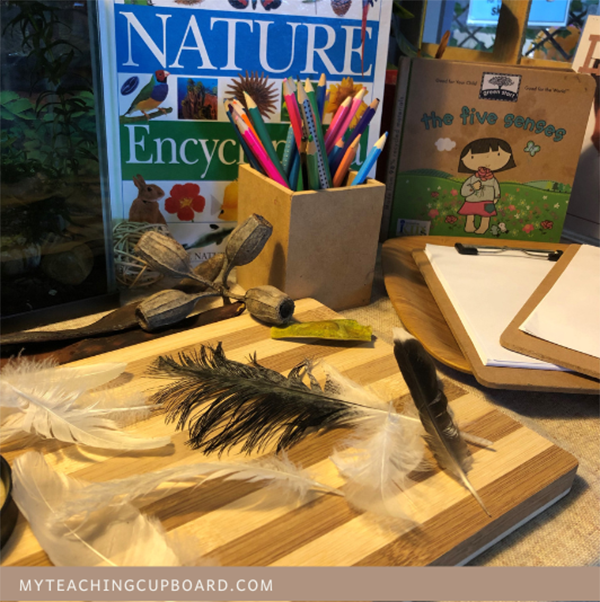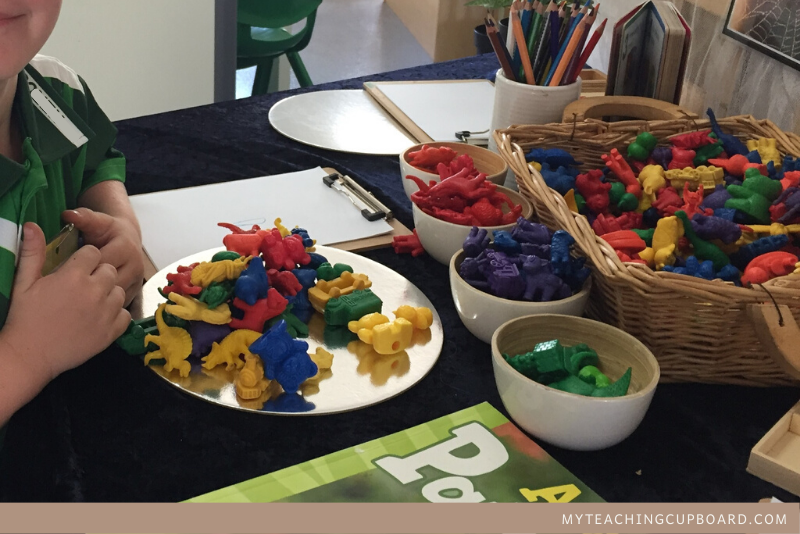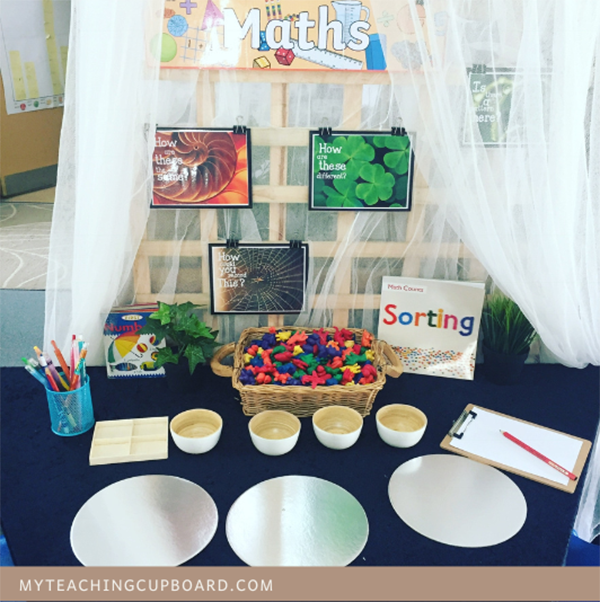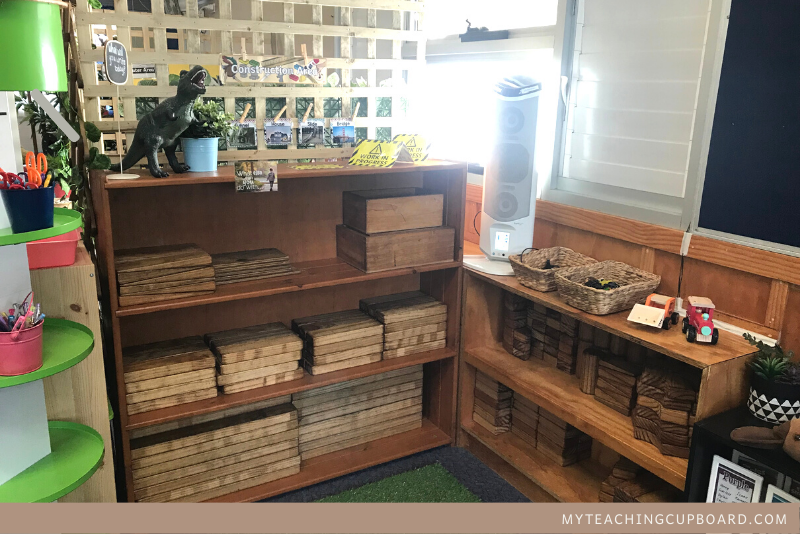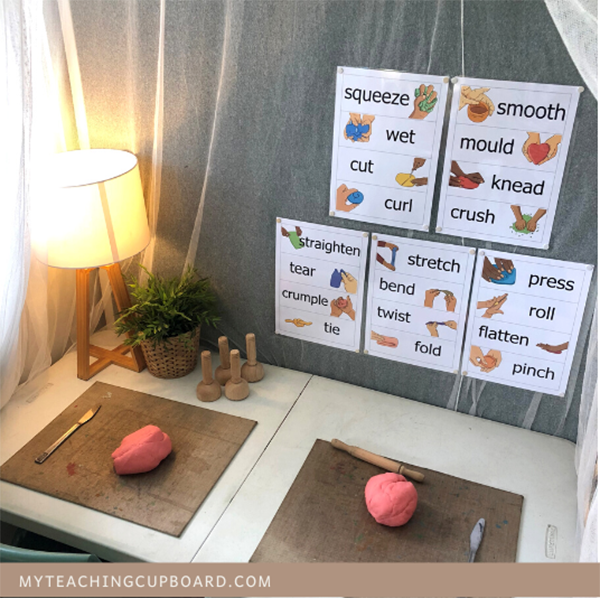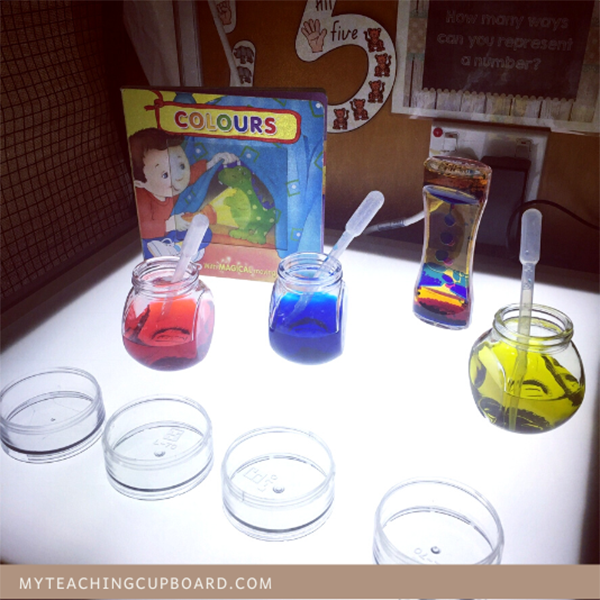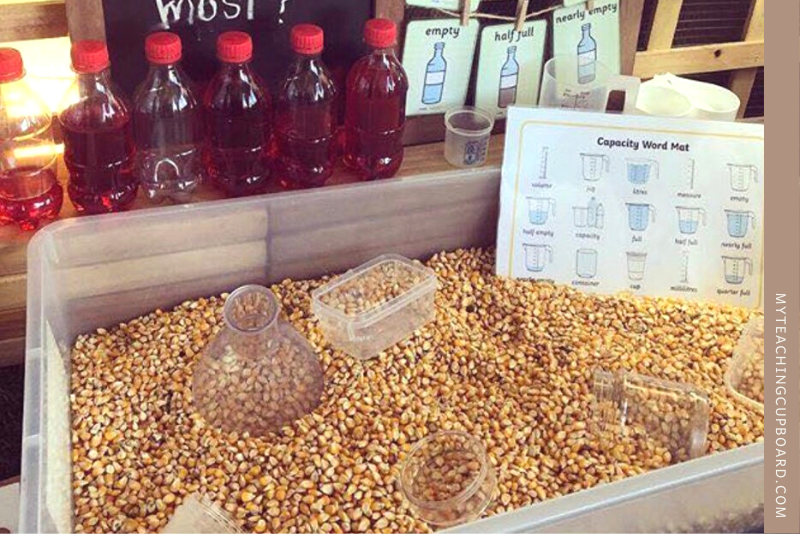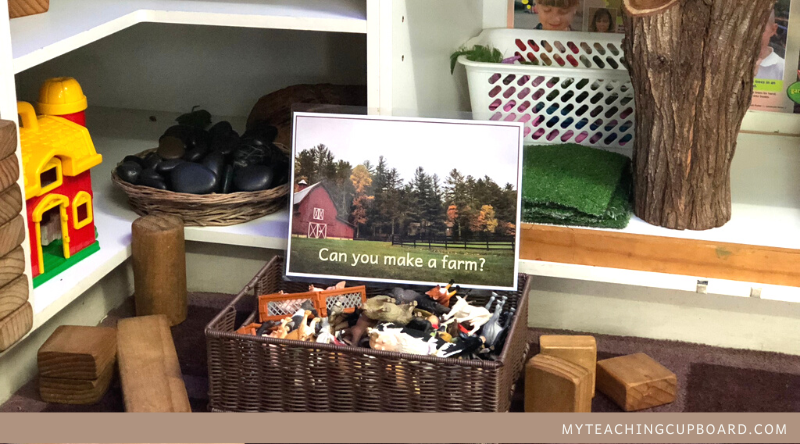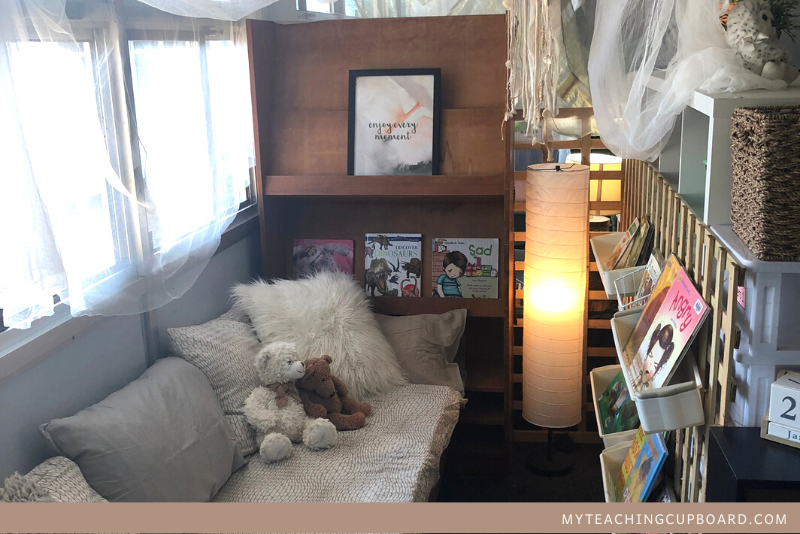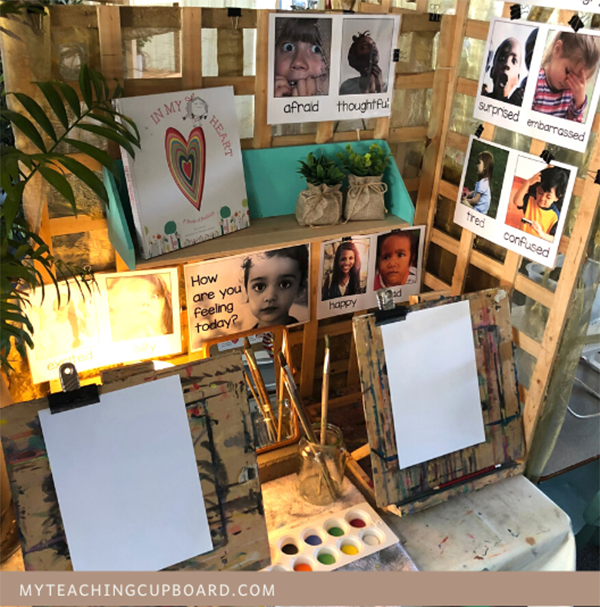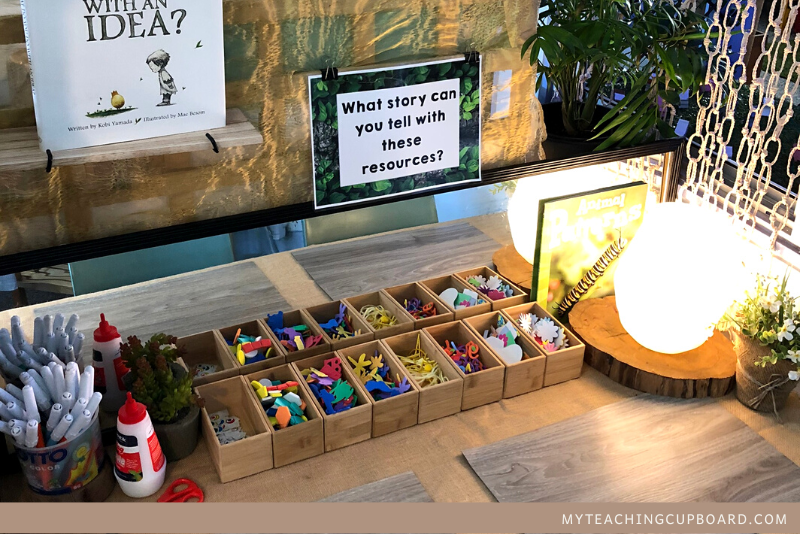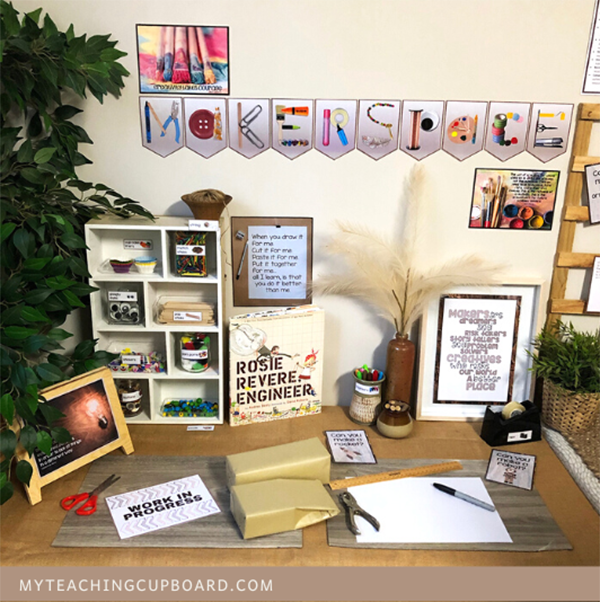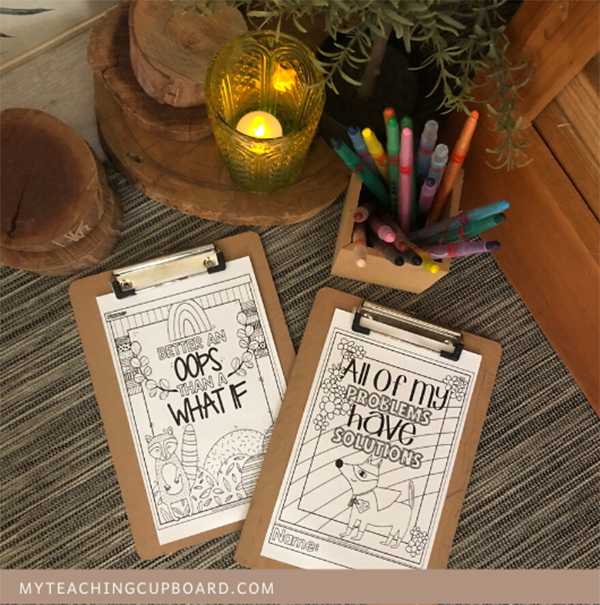Investigation Area Ideas for the Start of School
Are you looking for some simple yet highly engaging investigation areas and learning invitations to start the school year? Play-based learning is the best way to engage your students and encourage them to take an active role in their learning so this school year, welcome your students with investigation areas that are fun, organised, and educational.
In this blog post, you’ll discover a heap of Investigation area ideas for the start of school. These tried and tested learning invitations are my go-to setups year after year, so you’ll be sure to find some that you can use in your classroom too.
What investigation areas do you need at the start of the school year?
Deciding on the investigation areas you will set up at the start of the school year is your first step in creating an engaging play-based learning space. The areas you choose for those first few weeks of school will set the tone and learning expectations for your investigation sessions for the remainder of the year, so it’s worth getting them right.
At the start of the school year, you will focus on building relationships and setting up your classroom routines and procedures. It is also about setting expectations around behaviour both for explicit teaching lessons and during investigation time.
Everything is new, and your students will probably be feeling overwhelmed and anxious, so your investigation areas must be well thought out and organised.
I have a blog post on the 10 Essential Areas of A Play-Based Classroom which you might like to check out. You don’t need all these investigation areas to start the year, but my list can guide you and give you some ideas to set up your own engaging learning spaces.
Keep in mind that your investigation areas will need to cater for 2 - 4 students at any one time. Young children learn through social interactions, so spaces should be designed for collaboration and discussions. You can control the noise levels by keeping your spaces small and intimate too.
The only area that may require a larger space is block play. Here children will need a large enough space to build more complex designs. A small block play space is unsafe if children must climb over their constructions to complete their buildings. A small space can also limit their creativity. Too large a space, however will invite children to sprawl the blocks aimlessly without any purpose to their constructions.
Your learning space should provide enough investigation areas for children to have a choice about where they work. During the investigation time. there needs to be enough free spaces available to your students so they can move to a different area if they choose to. At least ten investigation areas catering for 2 to 4 children at each, should give your class enough variety to do this.
The more investigation areas you have, the easier it will be for you to make purposeful observations which will in turn, help you to make informed decisions about the children developmentally, who they like working with, and what their interests are.
Teacher Observations at the Start of the School Year
Your primary role during investigation time should be that of the researcher. Through your observations and discussions, you will get to know your children and what their interests and developmental needs are.
It is vital in these first weeks of school that you take the opportunity to make purposeful observations of each and every child. Note who each child is working with, what they are doing, where they choose to work, and for how long. Make notes about possible future resources and learning invitations that will suit your children's individual needs. Use these important and informative observations to guide your lesson planning and assessments.
You might like to use my investigations observation checklist. This is the one I use in the first couple of weeks at the start of every school year. You can download it for FREE here.
When planning your investigation areas, you must consider the size of your classroom and the resources you have at hand. These will strongly influence the learning spaces you can set up at the start of your school year.
Teacher Tip: Keep it simple and open-ended.
Keeping your setups simple means having fewer resources out in each area. It will be much easier for your students to clean up and re-set the learning spaces this way. Some teachers like to display re-set photos in each space. The children can refer to these as a guide to how the investigation area should look when it has been re-set.
Open-ended resources will ensure your students will feel successful as they work. No matter what their developmental level is, EVERY child can purposefully and successfully work with open-ended materials.
You will make better observations when you use open-ended resources too. Because your students will work at their developmental level, you will make informative and evidence-based observations. This teacher research is valuable in tailoring your future learning invitations and explicit teaching lessons to the needs of your students.
Remember - Investigation areas are for investigating and not for completing some teacher-designed task.
Teacher Tip: Put out only a few resources at each investigation area.
At the start of the year, you want your investigation areas to be quick and easy to re-set. Don’t be in a hurry to put out all your favourite treasured resources. Keep your learning invitations very simple and uncluttered. There are going to be plenty of opportunities throughout the rest of the year for you to offer more complicated learning invitations.
Your observations in those first few weeks will help you to decide which new resources you should offer and how complicated you will be able to make your future learning invitations.
Building Relationships at the Start of the School Year
Building relationships is something that you’ll be working on all year, but there’s nothing more important than relationship building in those first few weeks of school. During the first couple of weeks, I focus my full attention on getting to know each little individual. I let them know that I see them and will look after them. We start to build our classroom community right from day one.
Curriculum content will come soon enough. No child will learn from a teacher they don’t feel connected to. Focus on building relationships and becoming a researcher. Of course, there should be links to the curriculum, but in these early days, you really need to focus on getting to know your students and setting your classroom routines and behaviour expectations. Set these foundations up now to ensure the rest of the school year runs smoothly.
Routines and Procedures at the Start of the School Year
It is most beneficial to start play-based learning right at the beginning of the school year. You should be planning to run investigations on the very first day of school. They should be simple and easy for a child to navigate independently.
Classroom routines and procedures are set in those first few weeks of back to school. The routines and procedures of your investigation sessions need to be discussed and taught. It is vital your play-based learning rules and procedures are crystal clear if you want your students to meet your behaviour expectations and get the most from their investigation sessions. Timetable in a slot at your tuning-in and reflection times to explain and discuss the children’s roles and responsibilities. Make it clear what is expected of them during investigation time.
Science/Nature Table Investigation Area Ideas for the Start of the School Year
At the start of the year, the Science table is a place where children can connect to their local environment and make observations using their senses.
Possible Resources to Add
Smelly pillows or bottles, textured materials or feely cards, a feely box, eye mask or blindfold for experimenting with the sense of sight, sound tubes or opaque containers containing items that make a sound when you shake them, items collected from the local natural world (seed pods, shells, stones, plant cuttings, feathers).
Resources to Add to a Science/Nature Table
Science nature journal or clipboards with paper, lead pencils, colouring pencils, texts on science and scientists, text on the senses, vocabulary cards or posters on the senses and science, magnifying glass.
Math Investigation Area Ideas for the Start of the School Year
The Math area is a place where children can come to collect numeracy tools to use in other investigation areas. It is also a space where children can explore numeracy concepts. At the start of the year, the Math investigation area should contain easy to use numeracy tools and a variety of loose parts for counting, sorting, and patterning.
Possible Resources to Add
Wooden numbers, magnetic numbers and small magnetic whiteboards, magnetic discs and counters, glass gems in various colours, coloured counters, coloured pompoms, dice, sand, and water timers, measuring tapes, rulers, blank grids, numbered cups or plates, finger and counting rhymes on cards, a 100 board, calendars, calculator, attribute blocks, connecting cubes, MAB blocks, bundling sticks, a clock, ten frames, number lines, numicon, basic board games.
Resources to Add to a Math Table or Shelf
Math journal or clipboards with paper, lead pencils, crayons, texts on math concepts (counting, numbers, patterns, or measuring), open-ended math prompts, counting and number charts, number cards.
Block Play Investigation Area Ideas for the Start of the School Year
Blocks are one of the most versatile and open-ended resources you can offer in a play-based classroom. Your block play area should cater for 4 to 6 children and might need to allow for a few different constructions to happen at any one time. For this reason, I like to store our blocks on a shelf next to the carpet meeting area.
At the start of the year, don’t put too many blocks out. You often get children who like to pull every block off the shelf, making re-setting difficult and time-consuming. A varied selection of about 50 blocks should be plenty to start the year. After the first few days of observations, you will know if you need to add more or take some away.
Possible Resources to Add
Wooden numbers, stimulus pictures of buildings, stimulus pictures of different habitats, wooden people, cars and other vehicles, small artificial grass squares, dominoes, large dice, small toy animals, pieces of fabric, cardboard tubes, dinosaurs, pinecones, sturdy cups.
Resources to Add to Block Play
Various wooden blocks in different sizes and shapes, a small selection of open-ended loose parts (stones, large counters, pop-sticks, pompoms, 3D shapes), a scrapbook or clipboards with paper, lead pencils, texts on building and construction.
Playdough Investigation Area Ideas for the Start of the School Year
Playdough is a must-have. I have a dedicated playdough table set up for the entire year. Sometimes I swap out the playdough for other malleable substances like clay or plasticine. A playdough table will develop fine motor, creativity skills, and sensory perception. There’s always someone working at our playdough table.
Possible Resources to Add
Rolling pin, scissors, stamps, letter or number cutters, alphabet mats, baking trays, child-safe knives, loose parts (counters, glass gems, sticks, stones, shells, seed pods, pop-sticks, matchsticks, googly eyes, feathers, corks), baking trays, plates, silicone cupcake molds, ten frames, birthday candles, small toy animals, story stones, face parts on rocks, scented herbs, rulers, dice.
Resources to Add to a Playdough Table
Playdough, work mats or placemats to protect your table, a small selection of open-ended loose parts (stones, counters, pop-sticks, matchsticks), clipboards with paper, lead pencils, felt pens, playdough technique cards, vocabulary cards or text related to a learning intention (living things, families, feelings & emotions, numbers, letters, starting school).
Light Table Investigation Ideas for the Start of the School Year
If you are lucky enough to have a light table, here are some ideas for using it in the first few weeks of school.
Possible Resources to Add
Loose parts (transparent, translucent & opaque), clear sorting plates or dishes, water timers, ten frames drawn onto acetate, plants growing in jars, clear divided trays, translucent dice, eye droppers with three jars of red, yellow & blue coloured water, translucent dominoes, insects & plants in resin, crystals & gemstones, coloured slices of agate, glass beads, laminated cellophane shapes, gel numbers or letters, coloured hair gel writing bags, transparent paper, and various writing tools.
Resources to Add to the Light Table
Clipboards with paper, lead pencils, felt pens, vocabulary cards, or text related to a learning intention or your learning invitation. For example, you could include a text on colours if you choose to add the eye droppers with three jars of red, yellow & blue coloured water.
Sensory Tray Investigation Area Ideas for the Start of the School Year
Sensory trays are like child magnets. They can help regulate children’s emotions, but they can be messy at the start of the school year. They might be something you postpone putting out until your class is familiar with your routines and procedures. If you like to live dangerously, here are some ideas for easy clean-up sensory trays.
Possible Sensory Bases
Scented rice, sand, water, pompoms, corn kernels, dried lawn clippings, kinetic sand, bark mulch.
Possible Resources to Add to a Sensory Tray
Tubes, funnels, timers for maths, sorting cups or bowls, magnifying glasses, dishes, dice, spoons, cooking utensils, plastic animals, tweezers, tongs,
Sensory Play Measuring Tray
A dustpan for clean-up, sensory base (corn kernels, kinetic sand, pompoms, or large bark mulch), various-sized containers, cardboard tubes, clipboards with paper, lead pencils, crayons, vocabulary cards, or texts related to measuring.
A Living Things Sensory Tray
Dried grass & bark mulch, artificial plants, potted plants, toy insects, small logs, rocks, magnifying glasses, tweezers, text or vocabulary cards on insects, clipboards with paper, lead pencils, colouring pencils.
Sensory Play Water Trough or Tuff Tray
A mop or towel for clean-up, water, rocks and pebbles, plants, toy fish, insects & frogs, text or vocabulary cards on pond life, clipboards with paper, lead pencils, colouring pencils.
Dramatic Play Investigation Area Ideas for the Start of the School Year
Dramatic play is excellent for developing oral language and social skills. The dramatic play actually happens in many of your investigation areas and isn’t just confined to your designated dramatic play space. I include small-world play in the broader dramatic play umbrella.
Your designated dramatic play space should comfortably cater to at least four children, so it needs to be a larger space. At the start of the year, it’s best to keep the resources in this area to a minimum. You can easily add more when your children are better at re-setting.
Possible Resources to Add to Home Corner
Loose parts, dolls & doll clothes, basic dress-up clothes & uniforms, large chunky jewellery, cushions, baby bottles, toy birthday cake & candles, a doll’s pram, cradle & high chair, toy food, toy kitchen appliances (if using real appliances make sure to cut the cords off), tea-set.
Home Corner Essentials
Small table & chairs, a play kitchen, bowls, plates, cups, cutlery, tablecloth, a vase of artificial or real flowers, two saucepans and a frypan, loose parts (counters, stones, small wood cookies), cooking scales, egg timer, camera, old phone, toy clock, blank journals, lead pencils & markers, cookbook, texts on families, environmental print.
Doll House Small-World
Doll house, little toy families, peg dolls, small toy pets, a toy car, doll house furniture, small pieces of felt or fabric, texts on families, family posters or vocabulary cards, clipboards with paper, lead pencils, crayons.
Farm Small-World
Farm animals, fences, fabric, small artificial grass squares, toy trees, tractor, books on farms, vocabulary cards or posters about farms, clipboards with paper, lead pencils, crayons.
I Went Walking Text Based Small World
I Went Walking text, a small toy boy, fences, a farmhouse on an artificial grass square, toy animals from the text (black cat, red cow, brown horse etc ), other text books on farms, vocabulary cards or posters about farms or the animals in the story, clipboards with paper, lead pencils, colouring pencils.
Literacy Investigation Area Ideas for the Start of the School Year
Literacy is happening throughout all your investigation areas, but with the present literacy benchmark demands we face as teachers, it’s a good idea to have a designated reading area and a designated writing table as part of your investigation areas.
At the start of the year, Prep and kindergarten students will be looking through picture books in the reading area and making marks at the writing table. Older children will have more advanced skills, so that you can offer more developmentally appropriate resources.
These areas are often less popular, so making them as engaging as possible is important.
Reading Area Resources to Choose From
A small sofa, cushions, bean bags, a soft floor rug, lamp or fairy lights, overhead curtain, baskets or shelves of picture books (related to starting school, the five senses, counting, shapes & numbers, living things, families, friends & feelings), leveled or decodable readers, illustrated vocabulary books, alphabet books.
Writing Area Resources to Choose From
A sturdy table and chairs (I use my explicit teaching small group table), a child-accessible resource shelf with a variety of writing tools (pens, pencils & markers), blank books & journals, diaries, different lined and plain papers and cardboards, sticky notes, rulers, letter stencils, magnetic letters & whiteboards, whiteboard pens, whiteboard erasers, blackboards and chalk, illustrated vocabulary books & cards, dictionaries, envelopes, scrabble tiles, class name tags or cards, sight-word & vocabulary cards, phonics charts, alphabet books.
Art Investigation Area Ideas for the Start of the School Year
Art-based investigation areas are always popular and will provide your students with endless opportunities to explore art as a form of expression creatively. These areas can get untidy and out of hand quickly, so it’s a good idea to have a labelled place for everything. Illustrated vocabulary cards for the resources in these spaces are extremely helpful in not only keeping the area organised and tidy, but they are also useful for children documenting their learning or writing construction plans.
At the start of the year, try to include at least two art areas.
Resources to Add to a Painting Area
Painting easels (desktop or standing), supply of paper to paint on, paint (watercolour palettes are less messy and good to start the year with), a small selection of paintbrushes, a couple of heavy jars of water, rags or tissues, a large mirror, texts and posters about families, feelings or starting school, illustrated feelings &emotions vocabulary cards, black marker for naming their work, a clothes airer or line to hang and dry their work, pegs.
Resources to Add to a Collage Table
Scissors, glue sticks, sticky tape on a dispenser, paper or card shapes, paddle pop sticks, wool, stickers, printed face parts, skin-toned coloured papers, cotton wool, small scraps of fabric or ribbon, a couple of magazines, a small selection of coloured and plain paper, crayons, felt pens, texts and posters about families, living things, feelings or starting school, illustrated resource vocabulary cards.
Resources to Add to Box Construction or a Makerspace
Scissors, glue sticks, clag glue, masking tape, sticky tape on a dispenser, cardboard boxes (cereal and food boxes & packaging), a Makerspace display pack, a small selection of collage materials, illustrated resource vocabulary cards, a variety of coloured and plain papers & cardboards, crayons, felt pens & markers, texts and posters about families, living things, feelings, craft & constructions or starting school.
Tinkering Investigation Area Ideas for the Start of the School Year
Tinkering isn’t just about dismantling old appliances. Start the school year with some simple construction and deconstruction sets like lego. A simple woodworking area might be an option you might like to consider too.
Possible Resources to Add to a Tinkering Table
Lego, duplo, mobilo, zoob, jenga planks, little architect kits, stem kits, STEAM prompt cards, an electrical appliance (toaster, fan, laptop & simple tools like screwdrivers and pliers), wood and woodworking tools like nails & a hammer, texts on carpentry, lego ideas or machines and how things work, a timer, rulers, camera to record work, a blank paged journal or clipboards with paper, lead pencils, feltpens, Tinkering display pack.
Fine Motor Investigation Area Ideas for the Start of the School Year
Fine motor skills are being developed in all of your investigation areas because all the areas offer hands-on learning experiences. Fine motor skills need to be developed throughout the early years of school so it’s a good idea to include a designated investigation area where fine motor skills are the primary learning outcome.
You could include many fine motor activities in your investigations, but I like to start the school year with a cutting pool. Don’t throw away all the little pieces the children cut up. Add them to your collage or box construction area.
Cutting Pool Resources to Add
Child’s plastic wading pool, a few pairs of scissors, scraps of paper, pieces of wool and string.
Mindfulness Investigation Area Ideas for the Start of the School Year
Creating a calm, quiet space is common in most classrooms whether you offer investigative play sessions or not. A space where children can self-regulate and catch a break from the sometimes overwhelming classroom activities is an important feature in our classrooms.
Resources to Add to a Mindfulness Area
Soft rug on the floor, cushions, stuffed toy animal, soft lighting, fairy lights, a lava lamp, books and vocabulary cards on feelings & emotions, an acrylic mirror, fidget toys, yoga cards or books, growth mindset posters, noise cancelling headphones, soft blanket, weighted toy, mindful colouring, colouring pencils or crayons.
Planning for the Start of the School Year
When you start planning for the first week of school, there’s a never-ending list of things that need doing and curriculum to cover. It can be quite overwhelming – for you and your students. You won’t get it all done, and it won’t be perfect, and that’s OK.
If you are interested in my planning for the First Week of School, download it from my FREE Resource Library. My timetables for both Prep (Foundation Stage) and Year one are included.
I’ve compiled a detailed play-based learning guide with information about setting up investigation spaces at the start of the school year. There are lots of ideas and photos of investigation areas you can use for starting back at school too.
CLICK HERE TO DOWNLOAD my play-based learning pdf so you can print out the detailed guide and view all the examples of play-based learning invitations you can use for starting the school year.
Investigations in the first few weeks of school are all about your observations and training your students. You will need to focus on
relationship building
teaching your children how to use the classroom resources respectfully
teaching your students how to interact with each other
establishing classroom rules and routines.
Taking the time to establish these now will ensure your investigation sessions will run smoothly for the remainder of the year. As the school year progresses, you will learn so much more about your student’s interests and needs, and your growing knowledge will be reflected in your learning invitations. You’ll notice your investigation set-ups will become increasingly more complex and tailored to your students.
Let your children and your observations guide you.
If you liked this blog post on Investigation Area Ideas for the Start of School, please consider sharing it...
Just CLICK the sharing box below. 👇

